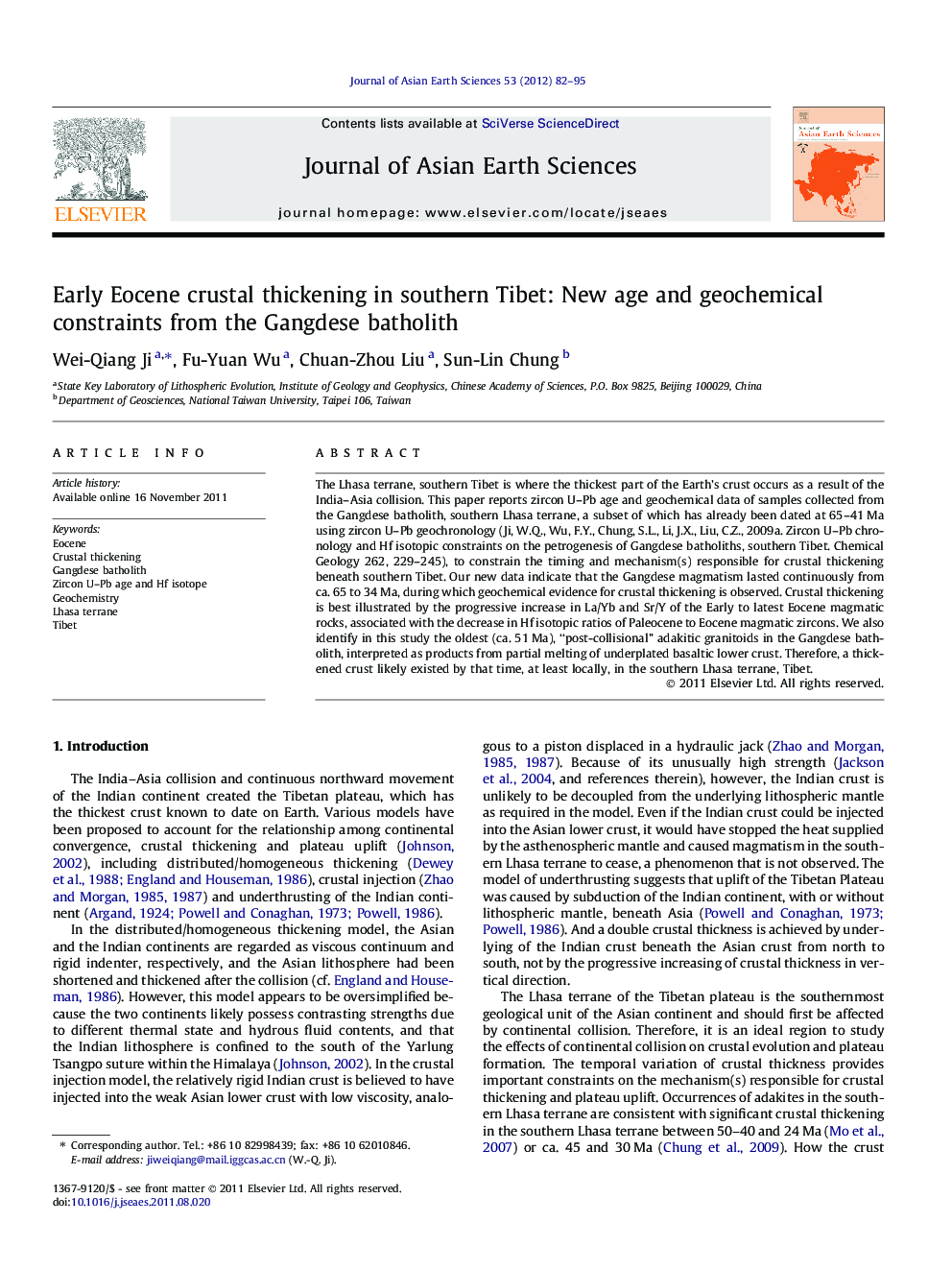| Article ID | Journal | Published Year | Pages | File Type |
|---|---|---|---|---|
| 4731383 | Journal of Asian Earth Sciences | 2012 | 14 Pages |
The Lhasa terrane, southern Tibet is where the thickest part of the Earth’s crust occurs as a result of the India–Asia collision. This paper reports zircon U–Pb age and geochemical data of samples collected from the Gangdese batholith, southern Lhasa terrane, a subset of which has already been dated at 65–41 Ma using zircon U–Pb geochronology (Ji, W.Q., Wu, F.Y., Chung, S.L., Li, J.X., Liu, C.Z., 2009a. Zircon U–Pb chronology and Hf isotopic constraints on the petrogenesis of Gangdese batholiths, southern Tibet. Chemical Geology 262, 229–245), to constrain the timing and mechanism(s) responsible for crustal thickening beneath southern Tibet. Our new data indicate that the Gangdese magmatism lasted continuously from ca. 65 to 34 Ma, during which geochemical evidence for crustal thickening is observed. Crustal thickening is best illustrated by the progressive increase in La/Yb and Sr/Y of the Early to latest Eocene magmatic rocks, associated with the decrease in Hf isotopic ratios of Paleocene to Eocene magmatic zircons. We also identify in this study the oldest (ca. 51 Ma), “post-collisional” adakitic granitoids in the Gangdese batholith, interpreted as products from partial melting of underplated basaltic lower crust. Therefore, a thickened crust likely existed by that time, at least locally, in the southern Lhasa terrane, Tibet.
